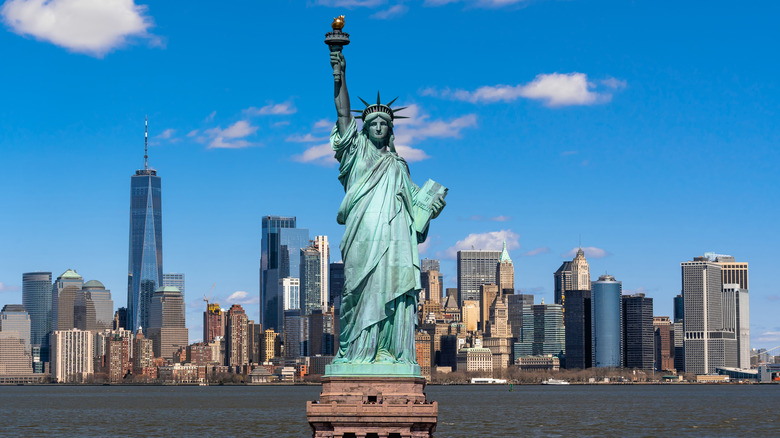What Is The Difference Between Immigrate And Emigrate?
Immigration and emigration are similar-sounding words with distinct meanings. It's easy to get them confused, especially as international events like Russia's invasion of Ukraine reintroduce these terms into our global discourse. But immigration and emigration are constants in modern life, both in wartime and peacetime. As a nation's borders, alliances, and economies shift, families and working individuals may feel pressure to move to and from different countries in search of work, familial ties, or refuge. The Grammarly blog explains that emigrating "means to leave one location, such as one's native country or region, to live in another," while immigrating "means to move into a non-native country or region to live."
Even knowing their definitions, these two terms may still seem alike. And yet, for example, leaving the United States of America and entering the U.S. are two very different prospects. Emigrating may imply disagreement with or a renouncement of someone's homeland, and immigrating somewhere new might kick an accomplished person to the bottom of the social ladder in their new land. History shows that both actions can be controversial or engender prejudice — but they can also help a nation and culture flourish.
Should you stay or should you go?
The Grammarly blog suggests a few mnemonic devices to help remember the difference between immigration and emigration. "Immigrate begins with the letter I," notes Grammarly. "If you associate I with 'in,' you can easily remember that immigrate means to move into a different country. Emigrate begins with an E, so if you associate it with exit, you'll remember that it means to leave your home country."
However, it can also be helpful to remember key moments from history that put these two terms into context. Both World Wars caused massive population shifts that changed the world in a very short time. The famous "Lost Generation" of writers, musicians and other artists in 1920s Paris were comprised in large part by American expatriates — Ernest Hemingway, George Gershwin, F. Scott Fitzgerald, and more — who all emigrated temporarily or permanently to France after World War I ended. Likewise, the iconic Statue of Liberty in New York Harbor became an everlasting symbol of immigration in the first half of the 20th century, as European migrants and refugees came through Ellis Island by the millions before, during, and after the chaos of World War II.

